Top serves: What the players and spectators are eating at the 2019 Australian Open
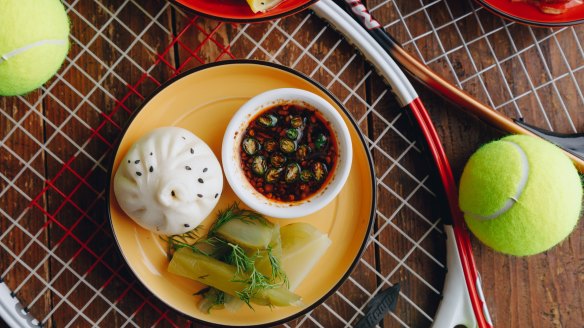
Melbourne loves major events – we do them well and we do them big. Yet all of them – the F1 Grand Prix, the Spring Racing Carnival, even the Grand Final – are nice little parties compared to the behemoth that is the Australian Open.
Over two weeks from January 14 to 27, more than 1 million people will pour in and out of the Melbourne Park precinct, snaring unreserved seats with groundpasses, or swanning to premium courtside thrones. But there's so much more to do than turn head from left to right and back again as balls are popped back and forth over a net. What started as a tennis tournament in 1905 has now become a jam-packed entertainment package.
A daily music program includes hit-makers Bastille and Craig David. There's a dedicated family area with waterslide and climbing wall. An associated Sports Film Festival screens everything from Kung Fu Panda to Rocky. There's even an NBL basketball game in a handy bit of sports co-promotion.
There's always been food at the tennis: clapping politely and being shushed makes a person very hungry, after all. But in the last few years the Australian Open's offering has increased in volume and quality and become as vibrant and interesting as a food festival, with a mix of big-name restaurant pop-ups (Nobu and Rockpool among them), food trucks and quality takeaways (Biggie Smalls kebabs, Burger Project), brand activations (a Vegemite truck!) and fine dining with international guest chefs. And if you just want an ice-cream in the sunshine, you can do that too.
Enda Cunningham, the AO's head of hospitality since the 2016 tournament, has overseen its expansion from sporting competition to cultural celebration. "We don't just want people to attend," he says. "We want them to stay, to have a really good food experience, to do what Melbourne's good at and bring food to life."
He's boosted premium experiences while at the same time democratising them. "We have debunked the old rules of corporate hospitality," says Cunningham, referring to an era when the plebs had pies and the suits ate steak in private marquees. "All our restaurants are open to everyone," he says. "You can have front row seats at Rod Laver and sit there with a bucket of chips or you can have a [$49] ground pass and book in to Nobu. We wanted to normalise it, give people a choice. Food is so important to the life of this city, it seemed an obvious thing to improve."
If you can organise one meal, you can organise 85,000. It's a challenge but this is my passion.Asif Mamun
He believes Melbourne's offering shines among the Grand Slams. "Wimbledon is beautiful and traditional, the French is about high-end hospitality but there's not a lot of choice for the general punter. There's a little bit at the US Open but overall, I think we're ahead," he says.
Cunningham works closely with AO executive chef Asif Mamun, who is cooking for his sixth Open. "Tennis never finishes for me," he says. "As soon as I pack up I am unpacking again." He is the point person for outside vendors, the head honcho for all in-house offerings, and also oversees catering for the Open's 6000-plus staff and – of course – the players.
His role is a busy blend of creativity, people-management and logistics. "Every year I challenge myself to come up with a lot of new dishes," he says. "I think summer flavours, holiday flavours, maybe inspired by Thailand or Bali or Spain." The food direction is creative and contemporary. "Before I was a chef, I was in art college," he explains. "I love colours, I love painting, I paint on the plate with my food."
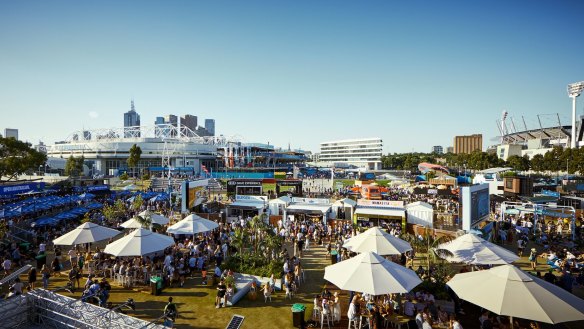
Mamun has a staff of 350 to bring it all to fruition but to ensure consistency and quality, systems are king. He painstakingly writes his recipes in a book-length folder, photographs the dishes, notes the key flavours and pressure points. The logistics are inspired by companies like McDonald's and Costco, for example by pre-making sauces and slow-cooking meats like brisket and lamb shoulder for defrosting close to time.
"I want it to be foolproof," says Mamun. "We will do 85,000 corporate meals in two weeks. My commitment is that every single one must be restaurant quality." He is acutely aware of the numbers but believes the principles of cooking should never change. "If you can organise one meal, you can organise 85,000," he says. "It's a challenge but this is my passion."
His epic order list includes 27 tonnes of meat and 2.5 tonnes of potatoes (and that's not including 25 pallets of potato chips) but the meals that result are highly refined. He's particularly proud of a spatchcock dish designed for this year's tournament. "I marinate the spatchcock in buttermilk with secret herbs and spices, then slow cook it for 2½ hours, then serve it with raspberries, strawberries and dill," he says. "I make a nice chicken jus to go with it too. It's a mixture of freshness and luxury."
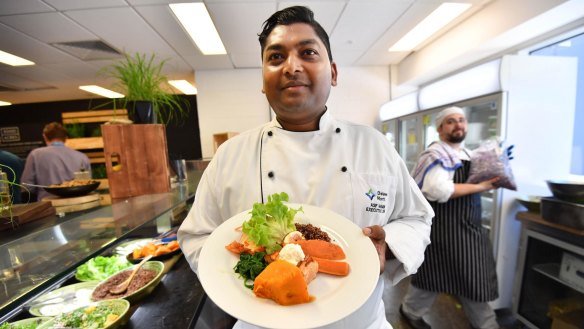
Catering to the players is a particular passion. "The players are the heroes," he says. They have a new, private two-level restaurant envisaged as a food map of Melbourne. "We have the laneways, Chinatown, Brunswick Street, Lygon Street," says Mamun. "I'm giving them a tour of Melbourne that they can see, they don't need to go outside."
The top 10 players are able to communicate requirements in advance but chefs are on hand to whip up meals for all athletes according to whim or nutritional needs. "I have three chefs that are specialists on dietaries," says Mamun. The feedback from the sneakered demigods is good. "They tell me this is the best food offering anywhere in the world," he says.
Whether it's feeding players or fans, Mamun never loses sight of the ultimate motivation. "I take food very seriously," he says. "It's a way I can communicate with people and make them happy. I try to wow every time."
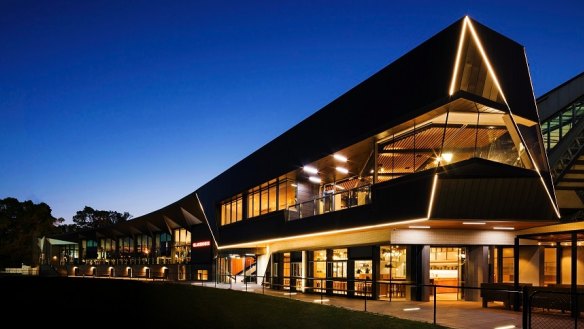
Originally from Bangladesh, Mamun has been in Melbourne 19 years and treasures being part of an event that is key to the annual rhythm of the city. "I'm very privileged to have this role," he says. "I feel really good to have this opportunity to represent Australia. It's hard work but I get a boost of energy to see people enjoying and loving it."
Across the road from the tennis centre, the AO is running its signature Chef Series at the Glasshouse, a swish function venue with Yarra Views. Four high profile chefs each appear for a three-day season with the Italian-born and Paris-based Simone Zanoni kicking it off on January 14.
Zanoni will transport the Michelin-starred food of his Mediterranean restaurant, Le George at Four Seasons George V to Melbourne. It's his first trip to Australia – "when they asked, I said 'wow, yes!" – but not his first time cooking for Grand Slam tennis. "I have worked with the French Open," he says. "I love tennis. People who like tennis like good things in life. It's an educated public, I really like the clientele."
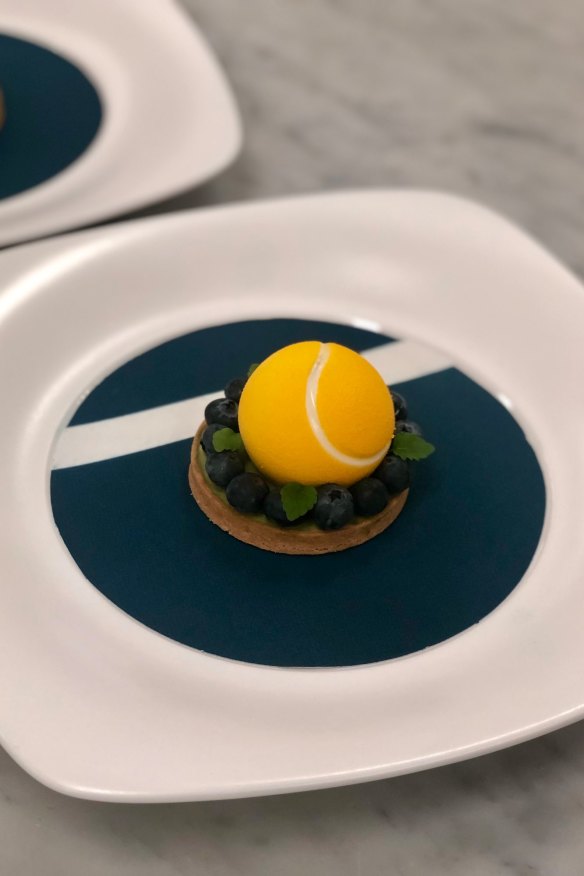
Zanoni will bring signature dishes such as carpaccio of beef with black truffle, and swordfish with basil vinaigrette but the transmission of culture is just as important as the flavour. "The idea is to bring my savoir faire to Melbourne," he says. "It's the way we cook, the way we share food and these moments. Food is about bringing people together. Technically, I want it to be very good but emotionally I want to be even stronger. It's the emotion that will stay with you, not the technique."
Local chef Alejandro Saravia (from Pastuso) is also at the Glasshouse. His pop-up restaurant, Farmer's Daughters, is a preview of an ambitious three-level venue he'll open in the city in 2020.
Saravia is not only testing his concept, he's delivering an immersive experience that will tell stories of Victorian seafood, including abalone, yabbies and barramundi farmed on the outskirts of Melbourne. "I've designed the menu so it feels like you're visiting a favourite Victorian beach," he says. "Maybe you'll remember your first fish and chips by the sea, or you'll think back to a time eating yabbies with vinegar by a campfire."
Of course, many AO visitors have no such memories – and that includes Peruvian-born Saravia. "We'll have props to help people get into the mood," he says. Part of the narrative is about sustainability: it's food plus food for thought, and Saravia hopes these meals are the beginning of an awakening for diners.
"It's our responsibility as chefs to educate about issues in our food systems," he says. "Every customer will receive a seasonal journal with the backstory of the producers and their ingredients, and a very clear list of which products you can source in different seasons. If I can make even one of these guests go once to the market and decide not to buy fruit that's imported or out of season, I'm already winning. I'm not trying to change the world overnight, but just one change makes a lot. We are trying to wake up curiosity in our customers."
Saravia is also a mad tennis fan. "For me, the Australian Open is the event that we have here in Australia," he says. "I love seeing the AO cars running around the city, the satellite events... it lights up the city." He sees synergies between tennis players and chefs, too. "The training, the degree of professionalism and the constant pursuit of goals is admirable," he says. "As chefs, we also try to achieve excellence in what we do. You can relate it in both professions."
To be part of it is meaningful, even magical. "It means a lot to me to be part of an event that takes Melbourne to higher standards," says Saravia. "It's so much more than just serving food at the tennis."
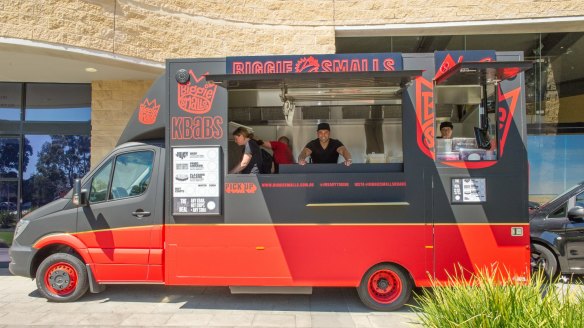
Top (food) serves
Garden Square (between Rod Laver Arena and court 3): a Vegemite truck is at ground level, and the balcony has Laneway Club, a recreation of Melbourne neighbourhoods and street eats. You'll also find 88 Melbourne for reservations-only contemporary dining.
Grand Slam Oval (between Rod Laver Area and Melbourne Arena): a pop-up paradise with Biggie Smalls kebabs, San Antone barbecue, Mamasita's Mexican food and Beijing Betty, a new concept from the restaurant group that owns Tokyo Tina and Hanoi Hannah. If the concept works at the tennis, it's sure to get another run. This area also has a good drinks offering with 400 Gradi pizza collaborating with Aperol, and a champagne bar from Piper-Heidsieck.
The AO Festival precinct in Birrarung Marr has food by Huxtaburger and Hunky Dory fish and chips.
The live stage, also in Birrarung Marr, is serviced by food truck gridlock and a Coopers Bar.
The Berm (on the Olympic Boulevard side of Margaret Court Arena) has flagship Crown restaurants Nobu and Rockpool.
The Glasshouse, on the other side of Olympic Boulevard, overlooking the Yarra River, hosts the signature Chef Series. Simone Zanoni, Jacques Reymond, Alejandro Saravia and Duncan Welgemoed create intimate fine dining experiences (from $195).
Reservations and more information: ausopen.com
Restaurant reviews, news and the hottest openings served to your inbox.
Sign up